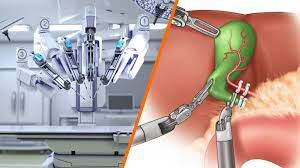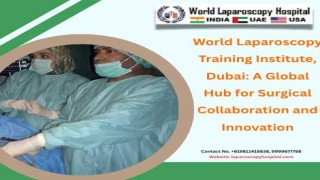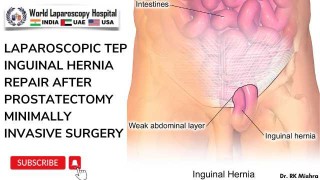Laparoscopic Management of Acute Appendicitis with Peritonitis: Step-by-Step Surgical Guide
Add to
Share
10 views
Report
14 hours ago
Description
Acute appendicitis remains one of the most common surgical emergencies worldwide. When complicated by peritonitis, the condition becomes more severe, demanding urgent and precise surgical intervention. At World Laparoscopy Hospital (WLH), under the guidance of Dr. R. K. Mishra, laparoscopic management of such complex cases has evolved into a safe, standardized, and highly effective approach that minimizes trauma and enhances recovery. Understanding Acute Appendicitis with Peritonitis Peritonitis develops when an inflamed appendix ruptures, releasing infectious material into the peritoneal cavity. Patients typically present with severe abdominal pain, fever, rigidity, and signs of sepsis. The laparoscopic approach allows for both diagnosis and definitive management, offering superior visualization and the ability to wash out contaminated peritoneal fluid effectively. Advantages of Laparoscopic Surgery at WLH World Laparoscopy Hospital has been a global pioneer in minimally invasive surgery since 2001. Performing laparoscopic appendectomy in patients with peritonitis offers numerous benefits: Better visualization of the entire abdominal cavity for thorough lavage and inspection. Reduced postoperative pain and minimal wound complications. Faster recovery, shorter hospital stay, and early return to normal activity. Smaller scars and superior cosmetic outcomes. Comprehensive training environment where surgeons learn these advanced skills through real surgical exposure and simulation. Step-by-Step Laparoscopic Surgical Procedure 1. Patient Preparation Patient is placed under general anesthesia. A Foley catheter and nasogastric tube are inserted to decompress the bladder and stomach. The patient is positioned supine with a slight Trendelenburg tilt and left side down to facilitate bowel displacement. 2. Port Placement Three ports are typically used: 10 mm umbilical port for the camera. 5 mm suprapubic port. 5 mm left lower quadrant port for working instruments. Pneumoperitoneum is created using CO₂ insufflation. 3. Initial Exploration The peritoneal cavity is inspected for pus, fibrin, and fecal contamination. The source of infection is identified, usually a perforated or gangrenous appendix. Fluid and pus are aspirated and sent for culture. 4. Appendix Identification and Dissection The cecum is traced to locate the appendix. Adhesions are gently released using blunt dissection and energy devices. The mesoappendix is divided using bipolar cautery or vessel sealing system. 5. Appendix Transection The base of the appendix is ligated using endo-loops or stapler, and the appendix is divided. The specimen is retrieved in an endobag to prevent contamination. 6. Peritoneal Toilet and Drainage The entire peritoneal cavity is thoroughly irrigated with warm saline until clear fluid is seen. Subhepatic, pelvic, and paracolic gutters are meticulously cleaned. A drain may be placed in the pelvis to monitor postoperative infection. Postoperative Care Patients receive broad-spectrum antibiotics. Early mobilization and liquid diet initiation within 24 hours are encouraged. Drain removal is done once output is minimal and non-purulent. Most patients at WLH are discharged within 2–4 days, depending on recovery and infection control. Training Excellence at World Laparoscopy Hospital At WLH, surgeons from more than 138 countries are trained in advanced laparoscopic techniques through hands-on sessions, high-definition video lectures, and live surgery demonstrations. The step-by-step teaching model ensures that every trainee masters not just the procedure but also the judgment and finesse required to handle complex cases like appendicitis with peritonitis. Conclusion The laparoscopic management of acute appendicitis with peritonitis at World Laparoscopy Hospital exemplifies the union of precision, innovation, and experience. With minimally invasive surgery, patients receive safer, faster, and more effective treatment, while surgeons gain invaluable expertise in tackling one of the most challenging emergencies in abdominal surgery.
Similar Videos






